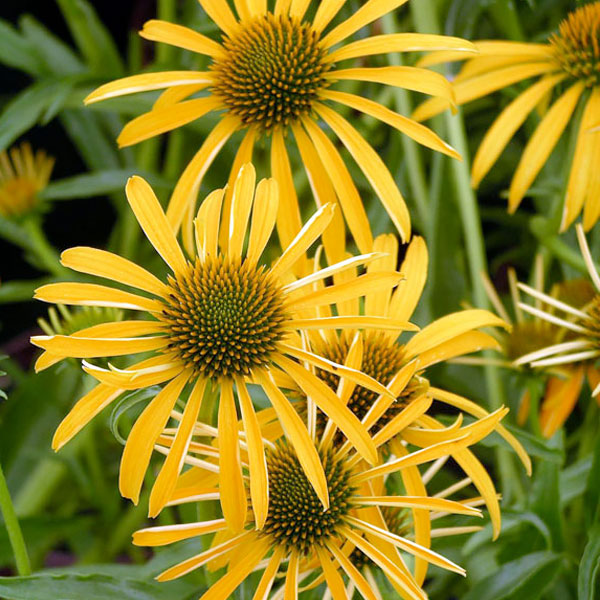

Coneflowers
Coneflowers
Echinacea
Also known as snakeroot, comb flower, hedgehog, and to the native Potawatomi as ashosikwimia'kuk, which means "smells like muskrat scent," Echinacea is a quintessential midwestern native that dots prairies from Illinois to Virginia, and Louisiana to Georgia. This late-summer bloom is not only a popular choice of midwestern gardeners, but it's also a pollinator favorite, and a key ingredient in herbal teas and natural remedies.

Coneflowers In Our Gardens
Over the last few decades, plants once native to midwestern prairies have been welcomed into gardens. An easily grown, drought-tolerant plant, Echinacea prefers full sun and well-drained soil. In an open, dry, sunny spot that needs to be filled in, it is a great choice. Hardy from USDA Zones 3 through 9, this perennial can grow up to 5 feet tall with a 2-foot spread in optimal conditions.
Like other members of the sunflower or aster family, the coneflower has what appears to be a singular flower but is actually a head of many flowers. This species has what are called ray and disc flowers that are a preferred nectar source of both bees and butterflies, and that attract beneficial insects to the garden. Echinacea spreads aggressively in a mixed border and must be kept in check by weeding out the volunteer seedlings. Be careful not to take out too many. It is a short-lived perennial, so gardeners should allow some of the seedlings to survive in order to keep this plant in their gardens for seasons to come.
Herbal Powers
Traditionally used to treat a range of infections and malignancies, the roots and herb (above-ground parts) of Echinacea species are purported to have "immune stimulant" properties. Native Americans of the Great Plains held Echinacea in high regard. For more than 400 years they used it as a cure for infections and wounds, and even prescribed it for snakebites, stings, toothaches, and the mumps. As herbal remedies have enjoyed a resurgence in popularity, echinacea is frequently used at the onset of a cold and in the treatment of viral infections and inflammation. Now found in many over-the-counter dietary supplements and herbal teas, it is thought to aid in the treatment of everything from ear infections to athlete’s foot.
The Warm Hues of Coneflowers
Preserving for the Future

As urbanization and agriculture have overtaken the prairie, leaving only small, isolated fragments where these native plants try to survive, seed banking efforts have helped prevent this popular flower from becoming extinct. Echinacea continues to brighten midwestern gardens each summer—and provide relief for midwestern sniffles throughout the winter. That’s a seed worth banking on!







